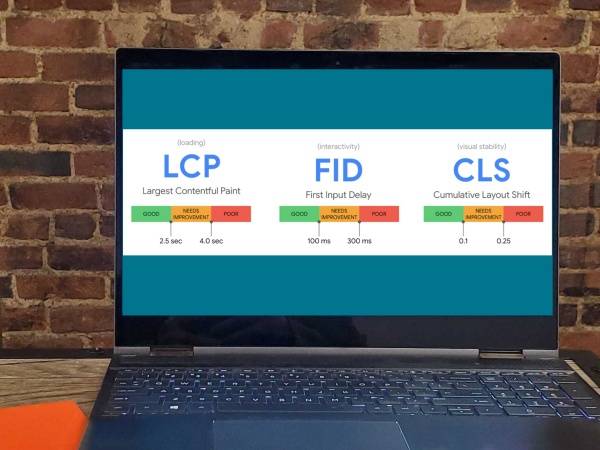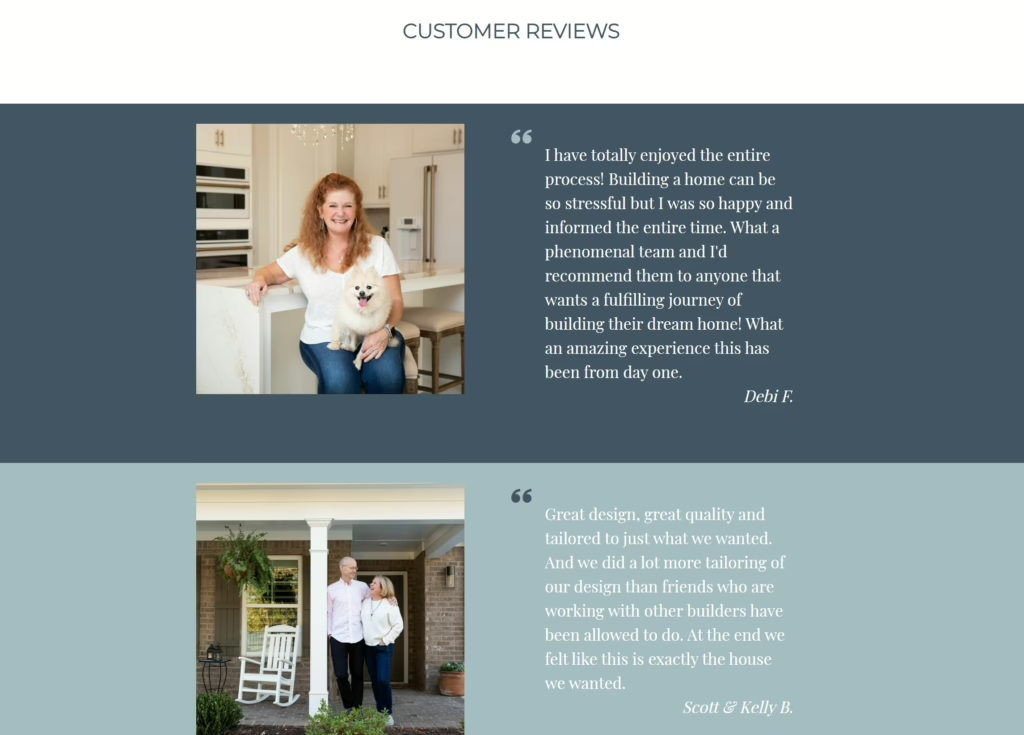7 Must-Have Website Features in 2025
Your website is a critical piece of your marketing mix and your brand’s overall reputation and performance in this digital world. But the standards and demands of what makes a strong website that can deliver on your business goals and objectives change rapidly alongside fast-moving technology and user expectations. So, how do you know if your website is up to the task? Our team works with a large variety of clients and websites large and small, and we’ve highlighted seven key features that you need to consider in determining whether your website has what it takes to compete in 2025 and beyond.
- Fast Load Time
- Mobile First Performance
- Simple Navigation
- Engaging Visuals
- SEO-Smart Content
- Trust Builders
- Compelling Call to Action
Fast Load Time
Your website is often your first opportunity to make a good impression. And let’s face it, no one likes to be kept waiting. Nowhere is this truer than on the web where users expect quick response to catch their attention and keep them from moving on to a potentially long list of other available choices. One recent study showed that e-commerce sites with a 1-second load time had a conversion rate three times higher than those that took 5 seconds to load.
Fast loading times are not just about short attention spans though. As a key element in Google’s Core Web Vitals, page load times also play a critical role as a ranking factor in search engine optimization. Simply put, pages with faster load times on both desktop and mobile have an advantage when it comes to search rankings. In an ever more competitive search landscape, your site’s loading time can be the difference between page one and none.

Mobile First Performance
Responsive design has been the standard for website design for years now but, looking ahead, some mobile responsiveness is no longer enough. Today is a mobile-first world. The majority of web traffic today comes from mobile devices, and if your website isn’t designed specifically with mobile usage in mind, you can expect to lose out on traffic and opportunities. In fact, more than 70% of all e-commerce traffic heading into 2025 is mobile. Ensuring that your site is easy to read, easy to navigate, and easy to use on a mobile device keeps mobile users from bouncing off of your site and increases the chance that they will take action and convert.
Also, just like page loading speed, mobile optimization is an important ranking factor for search engines like Google. So, making sure that your website is optimized to provide a strong, intuitive mobile user experience is critical in improving and maintaining your search engine rankings.

Simple Navigation
Once you’ve gotten that valuable traffic onto your website, your ultimate goal is to engage and keep them there. One of the first and most important factors in increasing the length of time that users spend on your site as well as the likelihood that they will convert is the ease of navigation that the site provides. This allows the user to find the information that they are seeking and the things that are of most interest to them. Navigation should also be focused and action oriented – best practices suggest no more than a maximum of seven options – to allow users to easily understand what they should do in terms of next steps, moving them down that all important path toward conversion.
Website navigation should be intuitive. Achieving that means approaching the site design from the user’s point of view – creating an organized architecture of information and simple, consistent paths to move through it. Look at the big picture and consider the pathways that lead users through your site and to the desired action you want them to take. Then be thoughtful in smoothing the path ahead of them, removing any potential confusion of friction points.
Engaging Visuals
Your website is a flagship touchpoint for your brand, so a strong and cohesive brand presentation on the web is a must-have for 2025. Your website sets the tone for your brand and in many ways is a proxy for the quality and service that users can expect in interacting with you. A compelling website presentation for your brand means sharp and engaging branded visuals, consistency in brand standards like colors, fonts and styles. Visuals and imagery on your website can also be a reflection of your brand voice. For example, using real photos of your products or people instead of stock imagery can add a sense of authenticity and a personal feel to your brand.
Smart usage of visuals on the web goes beyond just your brand too. It can also be an important tool in enhancing engagement and understanding of your content. Research shows that visual content gets 94% more views than text-only content. That’s a tremendous opportunity to boost engagement and, with it, conversions on your website. Whether simple illustrations or graphs, stylized infographics or more detailed video or animation pieces, making good use of visual spaces on your site ensures that you maximize every opportunity to deliver your message, build rapport and strengthen interest.
SEO-Smart Content
SEO (or search engine optimization) has changed dramatically in just the last few years. Gone are the days of stuffing your site with keywords. Today’s SEO incorporates everything from technical performance to smart content that is user-centric and contextual. Simply put, higher quality content gets priority in the rankings. So, how does a search engine determine the quality of your content?
Google’s framework for assessing content quality is often summed up as E-E-A-T: Experience, Expertise, Authoritativeness, and Trustworthiness. The first three elements culminate in the overall trustworthiness of the content – and trustworthiness is now at the heart of Google’s definition of a strong search result.
Experience: Does the source have first-hand experience with the subject matter? Do they offer insights or opinions that are unique?
Expertise: What kind of demonstrated knowledge, skills, or credentials does the source have?
Authoritativeness: How strong is the source’s reputation? Are they considered a reliable source?
Trustworthiness: Based on all of the above, how trustworthy is this source?
So, how can your website be optimized to set the stage for strong performance on these factors? A strong and secure technical platform needs to be complemented with a smart and well-rounded content strategy focused on optimized content that provides unique and relevant information and insights as well as backlinking and other authority-building opportunities.
Trust Builders
Google isn’t the only one looking for website elements that build trustworthiness. Your users are as well. There are a number of different ways to signal trustworthiness for your website audience and each can play a unique role in building a user’s confidence in who you are and what you have to offer. Think about how you can make customers feel safe and secure in their decision from their first click, all the way to conversion or purchase.
Site Security: Making sure that your website is secure with an up to date security certificate is a first, fundamental step in letting visitors know they can trust your site.
Memberships: Showcasing well-known organizations or associations of which your brand is a part, for example the Better Business Bureau or local Chamber of Commerce, can provide comfort and familiarity for those new to your brand.
Association: Another way to build confidence is to show other well-known brands with which you are associated – whether showing logos of partners you work with, current and past clients, or even well-known media outlets where you have received coverage or contributed. This can be particularly important for e-commerce sites in displaying verified payment options to ensure that users feel safe in completing a transaction on the site.
Social Proof: Studies have shown time and time again that the most trusted form of endorsement for any brand is a recommendation from someone else. You can help to power these “social proof” trust signals in a number of ways like incorporating customer reviews or testimonials on your site or pulling in and showcasing your social media feeds or user-generated content to show how others interact with your brand.

Compelling Call to Action
Generally speaking, the ultimate goal of your website is to move your website users to take some type of action. It is imperative then that you make those action steps clear and easy to complete in order to maximize your chances that users will follow through. The first step in doing so is to make sure that your site incorporates a clear and compelling call to action or CTA.
It’s important to keep in mind that visitors to your website may be in many different stages of the funnel – that is not everyone is ready to sign up or buy something right now. They may be conducting initial research or trying to learn more about all of their options. So, incorporating a variety of CTAs on your website tailored to these different stages of the funnel can help to encourage more website visitors to engage and keep moving to the next step.
Lead Generation: One of the most common and important CTAs on the web is to turn visitors into leads by providing their name, contact information, and other data to allow your brand to communicate with them directly. A great way to power lead generation is by offering something in return – for example, a resource to download, a special product discount, a demo or consultation.
Email Subscription: Another common CTA that can help you build your database is to offer an email subscription sign-up where users can join your email list for exclusive updates, a newsletter, or other communications they might choose.
Social Sharing: Inviting users to share your content with others via popular social media sites can be a great CTA that helps to spread the footprint of your content or engagement. This might be allowing photos to be shared to Pinterest or blog articles to Facebook, LinkedIn or X.
Designing and maintaining a website that’s up to the challenge of today’s competitive landscape takes expertise, planning, time, and persistence. These 7 fundamental features can make sure that you have a strong foundation to achieve your goals online and translate those into real world results.
